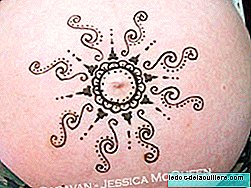
Today November 15 marks the European Day of Dystonia, a disorder characterized by involuntary and persistent muscular contracture, which results in abnormal postures or repetitive torsion movements. Dates like today serve to highlight diseases that are not well known and yet are not so strange.
And it is that dystonia is relatively frequent in the child, especially until two years of age. According to the Spanish Society of Neurology (SEN), dystonia is the third type of movement disorder in childhood, after spasticity (tense and rigid muscles) and tics, more frequent than previously believed.
Dystonia accounts for 24% of neuropediatric consultations by movement disorders. However, up to 40% of patients with dystonia are misdiagnosed, blaming the movements for psychological or emotional causes. Therefore, the SEN believes it is necessary to dedicate resources to achieve more effective treatments, carry out epidemiological studies and advance new diagnostic techniques.
In addition, little attention is often paid to these processes, so they are not diagnosed correctly. Therefore, if you notice involuntary muscle movements in your child, be sure to consult the pediatrician. You can suffer from a movement disorder such as dystonia, which usually disappears after a few months without leaving sequelae, but that should not be underestimated, because dystonia that extends to adulthood can cause various levels of disability.
Therefore, it is convenient for the child to be seen by a specialist to determine if dystonia is the only disorder or if it is accompanied by other signs such as epilepsy or mental retardation; if there is a family history of diseases with dystonia and if the dystonia begins abruptly or slowly or if it is a symptom of childhood parkinson's disease, a pathology of neurodegenerative type.
The most frequent types of dystonia that usually appear during childhood they are the dystonia of the infant, the benign torticollis of the infant and the paroxysmal tonic ocular elevation of the infant (the child deflects the eyes upwards, looking at the ceiling).
Dystonia usually follows a predictable pattern and always affects the same muscle group. Unlike tics, dystonia is not preceded by a sense of urgency of movement and there is no relief after doing it. Dystonia is also not voluntarily suppressible like tics.
According to the types of dystonia, it is a disorder that occurs between three and 30 cases per one hundred thousand people (there are quite a few differences in the studies that have approached it). According to a guide of the Study Group of Disorders of the SEN Movement, in Europe the prevalence of primary dystonia (usually genetic, in which dystonia occurs in isolation or is the predominant symptom) is around 150 cases per million population. Focal or secondary dystonia is around 110 cases per million inhabitants.
Today that European Dystonia Day is celebrated It is intended to make this disorder visible and the need to continue researching it to achieve better diagnoses and more effective treatments. We hope to put a grain of sand in this important diffusion work.












